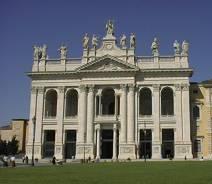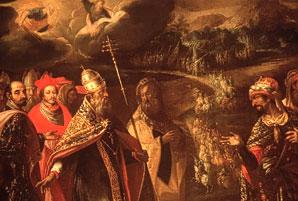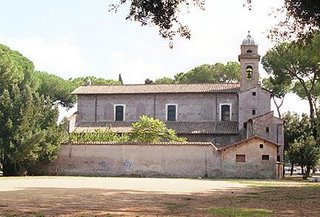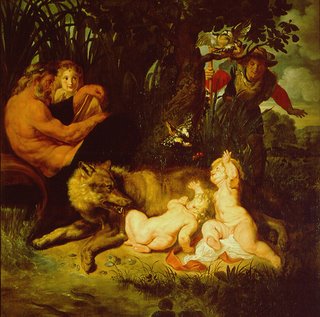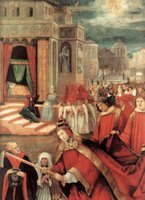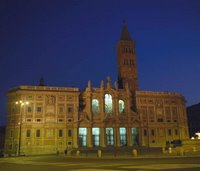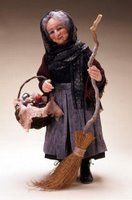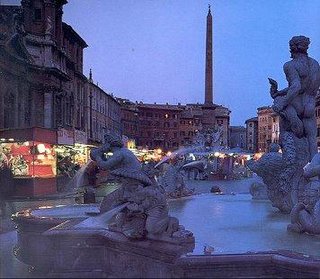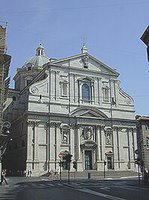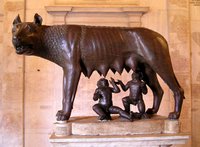Il colosseo e Il colosso di Nerone
 We spoke once of legends about the Colosseum. Here is another story. So, legends tells that the name of this monument derives from a colossus of Nero, a statue, that was very high and big; infact when Vespasiano (the emperor who built the Colosseum) changed the head of it, because of the hate of roman people against Nero, he had to make a very expensive and hard job. Infact he wanted to replace Nero with Apollus, the god of the sun; in particular behind the head of it, there were 7 ray of light, that to respect the proportion were of 21 feet. But this statue was also wrapped by a mystical and magic attention: infact a legend tells us that this statue was possessed by one of the most terrifying demons, imprisoned by priests. These priests, when a devout was in front of the colossum, asked him: "Colis eum?" (do you adore him?) (someone says that the name derives from it Colis eum -> colisseum) ; whatever was the response, the fortune of the devout was
We spoke once of legends about the Colosseum. Here is another story. So, legends tells that the name of this monument derives from a colossus of Nero, a statue, that was very high and big; infact when Vespasiano (the emperor who built the Colosseum) changed the head of it, because of the hate of roman people against Nero, he had to make a very expensive and hard job. Infact he wanted to replace Nero with Apollus, the god of the sun; in particular behind the head of it, there were 7 ray of light, that to respect the proportion were of 21 feet. But this statue was also wrapped by a mystical and magic attention: infact a legend tells us that this statue was possessed by one of the most terrifying demons, imprisoned by priests. These priests, when a devout was in front of the colossum, asked him: "Colis eum?" (do you adore him?) (someone says that the name derives from it Colis eum -> colisseum) ; whatever was the response, the fortune of the devout was different. The power of this idol was so big that the he was able to blow a freezing wind or a hot one, and moreover, during the day it was able to follow the rotation of the sun. Among devouts of it, there was Rossana, the wife of a roman king called Austerio, in the period when Roban was emperor (still today, no one is able to say who was Rabon). Anyway, Rossana wanted a son, but after a lot of years she was still barren; so one day she went to the statue to ask a son. The scary voice of it, said that she had to give a lot of jewels and money as sacrifice to the differents gods of Rome and in 9 months she will have a son, who will be called Olimpiodoro. But even if she did it, she wasn't pregnant after a whole year. When she felt totally desperate, she saw christians going to death, with a smile on their faces, and she was surprised seeign it and so a night she said with her heart out "Mary of Christians, let me have a baby!". She was surprised by her same words, but after nine months she birthed a baby, who was called Sebastiano, like the martyr. For more information post me a comment or e-mail me. Dblk
different. The power of this idol was so big that the he was able to blow a freezing wind or a hot one, and moreover, during the day it was able to follow the rotation of the sun. Among devouts of it, there was Rossana, the wife of a roman king called Austerio, in the period when Roban was emperor (still today, no one is able to say who was Rabon). Anyway, Rossana wanted a son, but after a lot of years she was still barren; so one day she went to the statue to ask a son. The scary voice of it, said that she had to give a lot of jewels and money as sacrifice to the differents gods of Rome and in 9 months she will have a son, who will be called Olimpiodoro. But even if she did it, she wasn't pregnant after a whole year. When she felt totally desperate, she saw christians going to death, with a smile on their faces, and she was surprised seeign it and so a night she said with her heart out "Mary of Christians, let me have a baby!". She was surprised by her same words, but after nine months she birthed a baby, who was called Sebastiano, like the martyr. For more information post me a comment or e-mail me. DblkEtichette: Colosseo, colosseum, Nero's statue

